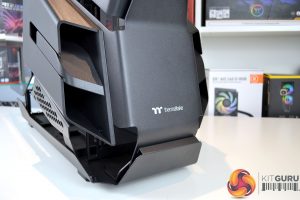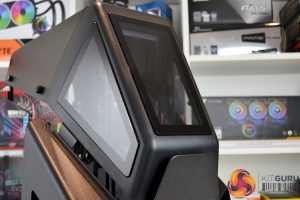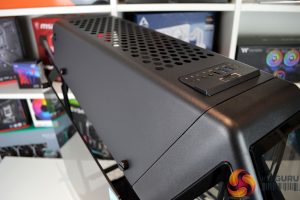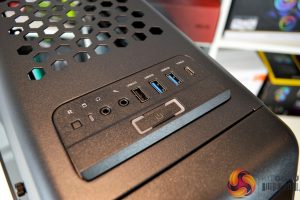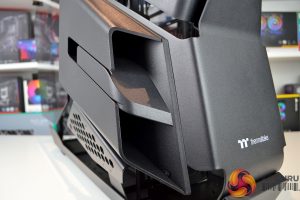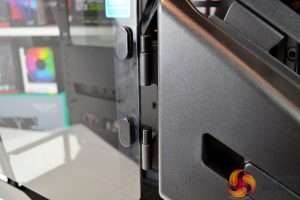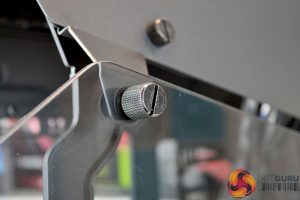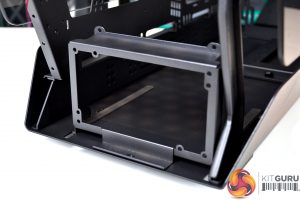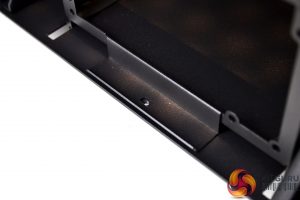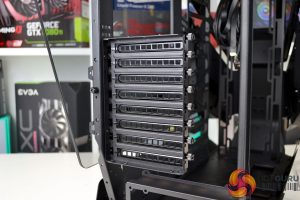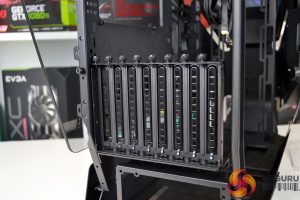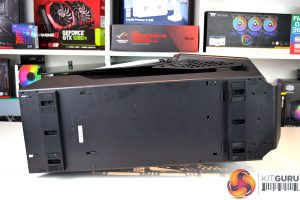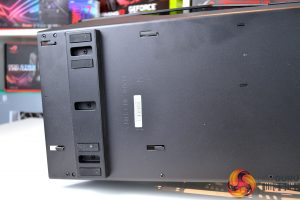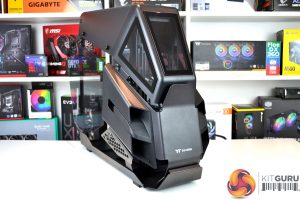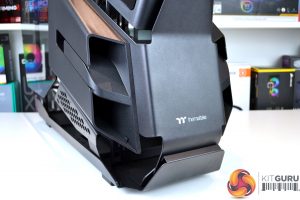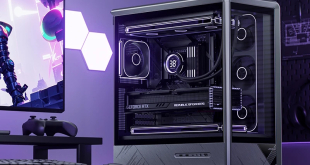The front panel of the AH T600 is made up of two sections, the lower half is constructed from a thick steel with a Thermaltake logo printed in white and the upper half is made of a combination of black plastic and three tempered glass panels. There are various air gaps around the bottom and at the side of the front panel for airflow.
A steel top panel featuring a large vent with wide hexagonal holes can be removed for installation of fans and top-mounted radiators. Towards the front of the top panel is the front I/O that includes power/reset buttons and LEDs, as well as various Type-A/Type-C USB ports and 3.5mm audio jacks.
Both sides of the case have a symmetrical design with lower air intakes or “engines” made from plastic, there for aesthetic reasons only and serve no purpose for airflow or anything of the kind. Below is an additional perforated metal vented section which is again here just to enhance the appearance.
Further back are 5mm tempered glass side panels mounted on hinges, with a single thumbscrew at the top to hold them closed, which makes easy access to the interior tool-free. All around the tempered glass side panels are large airflow gaps so heat build up inside the case should be kept to a minimum.
At the rear of the chassis, there is a power supply mounting bracket that can be removed to install the power supply to, before fixing it in position inside and securing with a single thumbscrew.
Above that are the PCIe slots, which can be installed so that expansion cards such graphics cards can be mounted in an either horizontal or vertical orientation by rotating the PCIe backplate and brackets. Above this is a large gaping hole that will be filled to a certain extent by the hardware installed inside the chassis.
On the base of the chassis are two large feet with four antivibration rubbers on each foot and there is no sign of a vent for the power supply fan. So looking at the layout of the chassis floor, it means that the power supply is designed to be installed with the fan facing upwards.
The case arrives in a partially disassembled state so there is a certain amount of assembly required, although it isn’t too difficult to complete. Overall the quality looks good, both the outer metal and plastic panels seem to be manufactured from high-quality materials, however, there is some noticeable flex in the chassis frame, this may be stiffened up later once the internal components are installed.
 KitGuru KitGuru.net – Tech News | Hardware News | Hardware Reviews | IOS | Mobile | Gaming | Graphics Cards
KitGuru KitGuru.net – Tech News | Hardware News | Hardware Reviews | IOS | Mobile | Gaming | Graphics Cards


